 W
WThe acocil is a species of crayfish in the family Cambaridae. It is endemic to Mexico, where it is known from Jalisco and Puebla.
 W
WThe Astacidae comprise the freshwater crayfish native to Europe and western North America. The family is made up of three genera: The genera Astacus and Austropotamobius are both found throughout Europe and parts of western Asia, while Pacifastacus is found on the Pacific coast of the United States and British Columbia and includes the signal crayfish and the Shasta crayfish.
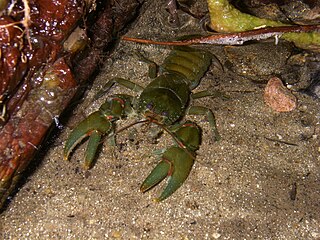 W
WAstacoides betsileoensis is a species of crayfish in the family Parastacidae. It is endemic to Madagascar. The populations are threatened by habitat loss due to land conversion as well as harvesting for food from locals and predation from introduced species. As of 2010 there were no specific measures for conservation apart from a minimum size limit of 10 cm for harvesting. In some areas, local rules and taboos help controlling the pressure from harvesting.
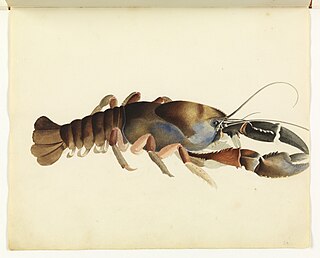 W
WAstacopsis is a genus of crayfish endemic to the island of Tasmania. There are three extant species, Astacopsis gouldi, Astacopsis franklinii, and Astacopsis tricornis. All are threatened by illegal harvesting, and A. gouldi is protected by law. A. franklinii is found in the eastern half of the island, with A. tricornis taking its place in the west. A. gouldi is found only in rivers draining into the Bass Strait, except for the Tamar River.
 W
WAustropotamobius is a genus of European crayfish in the family Astacidae. It contains four extant species, and one species known from fossils of Barremian age:Austropotamobius llopisi (Via, 1971) † Austropotamobius italicus (Faxon, 1914) Austropotamobius pallipes (Lereboullet, 1858) — White-clawed crayfish Austropotamobius torrentium (Schrank, 1803) — Stone crayfish Austropotamobius bihariensis Pârvulescu 2019 — Idle crayfish
 W
WThe blue crayfish, sometimes called the electric blue crayfish, the sapphire crayfish, or the Florida crayfish, is a species of freshwater crayfish endemic to Florida in the United States. Its natural range is the area east of St. Johns River and all of Florida from Levy County and Marion County southwards, as well as on some of the Florida Keys. It is included on the IUCN Red List as a species of Least Concern. The blue crayfish is frequently kept in freshwater aquaria. In the wild, this species varies from brown-tan to blue, but the aquarium strain has been selectively bred to achieve a brilliant cobalt blue color.
 W
WCambarellus diminutus is a species of crayfish in the family Cambaridae. It is endemic to the United States. It is native to Mississippi and Alabama, and is listed as Data Deficient on the IUCN Red List.
 W
WCambarellus lesliei is a species of crayfish in the family Cambaridae. It is native to Alabama and Mississippi in the United States. It is known commonly as the angular dwarf crawfish.
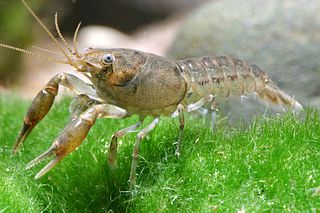 W
WCambarellus shufeldtii is a species of crayfish in the family Cambaridae. It is native to the United States, where it occurs in Alabama, Arkansas, Illinois, Kentucky, Louisiana, Mississippi, Missouri, Tennessee, and Texas. It is present in Georgia as an introduced species. It is known commonly as the Cajun dwarf crayfish.
 W
WThe Cambaridae are the largest of the three families of freshwater crayfish, with over 400 species. Most of the species in the family are native the United States east of the Great Divide and Mexico, but fewer range north to Canada, and south to Guatemala and Honduras. Three live on the island of Cuba. The species in the genus Cambaroides are the only found outside North America, as they are restricted to eastern Asia.
 W
WCambaroides is a genus of freshwater crayfish from eastern Asia. Together with Astacus, they are the only crayfish native to Asia. Cambaroides contains about six species:Cambaroides dauricus (Pallas, 1772) Cambaroides japonicus De Haan, 1841) Cambaroides koshewnikowi Birstein & Vinogradov, 1934 Cambaroides schrenckii (Kessler, 1874) Cambaroides similis (Koelbel, 1892) Cambaroides wladiwostokiensis Birstein & Vinogradov, 1934
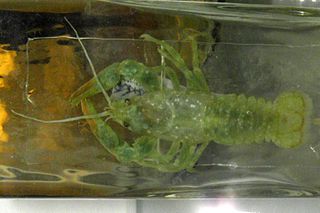 W
WCambaroides dauricus is a species of crayfish endemic to north-eastern China, the Korean Peninsula and neighbouring parts of Russia.
 W
WCambaroides schrenckii is a species of crayfish endemic to north-eastern China and Russia. It is a freshwater species that also occurs in some brackish water areas. It occurs in habitats with still water, typically no more than 1 metre deep. It was named after Leopold von Schrenck.
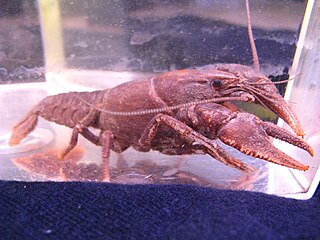 W
WCambarus georgiae, the Little Tennessee crayfish, is a species of crayfish in the family Cambaridae. It is found in North America.
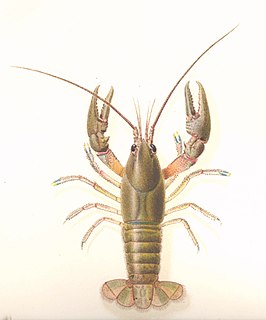 W
WCambarus robustus, known generally as the robust crayfish or big water crayfish, is a species of crayfish in the family Cambaridae. It is found in North America.
 W
WCambarus scotti, the Chatooga crayfish, is a species of crayfish in the family Cambaridae. It is found in North America.
 W
WCherax snowden is a species of crayfish from West Papua in Indonesia. In the wild, they live in freshwater river tributaries. It is popular as a freshwater aquarium pet across Asia, Europe, and North America because of its orange-tipped claws. Specimens were previously misidentified as members of Cherax holthuisi, also from West Papua.
 W
WCherax tenuimanus, known as the hairy marron or Margaret River marron, is one of two species of crayfish in Southwestern Australia known as marron. They are a deep blue colour with lighter claws. It occupies a narrow range within the southwestern biogeographical region of Margaret River. It is currently listed as critically endangered on the IUCN Red List, because of the threat from the wider ranged smooth marron, Cherax cainii, which was introduced to its habitat.
 W
WEngaewa is a genus of burrowing crayfish belonging to the family Parastacidae. There are five recognised species, all endemic to the high-rainfall zone of south-west Western Australia, from Dunsborough to Albany. They are all small, and found only in freshwater swamps and seepages. Three of the five species are listed under the Environment Protection and Biodiversity Conservation Act 1999 and are listed on the IUCN Red List as "endangered" (EN) or "critically endangered" (CR), while the remaining two are listed as "Least Concern":
 W
WEuastacus sulcatus, also known as the Lamington crayfish, is a freshwater crayfish, or "yabby", native to Australia. It is commonly bright blue in colour and roams the forest floor when conditions are damp. Red and white colour variants also exist.
 W
WFallicambarus is a genus of crayfish in the family Cambaridae from the United States and Canada. It includes 19 species, of which five are on the IUCN Red List as vulnerable species (VU), two as endangered species (EN) and one as a critically endangered species (CR). Only F. fodiens is widespread, occurring over a large part of the Central United States, and extending into Ontario; the other species are all restricted to three states or fewer from Texas to Florida.Fallicambarus burrisi (Fitzpatrick, 1987) – Alabama, Mississippi Fallicambarus byersi (Hobbs, 1941) – Alabama, Florida, Mississippi Fallicambarus caesius Hobbs, 1975 – Arkansas Fallicambarus danielae Hobbs, 1975 – Alabama, Mississippi Fallicambarus devastator Hobbs & Whiteman, 1987 – Texas Fallicambarus dissitus (Penn, 1955) – Arkansas, Louisiana Fallicambarus fodiens (Cottle, 1863) – Ontario, central United States Fallicambarus gilpini Hobbs & Robison, 1989 – Arkansas Fallicambarus gordoni (Fitzpatrick, 1987) – Mississippi Fallicambarus harpi Hobbs & Robison, 1985 – Arkansas Fallicambarus hortoni Hobbs & Fitzpatrick, 1970 – Tennessee Fallicambarus houstonensis Johnson, 2008 – Texas Fallicambarus jeanae Hobbs, 1973 – Arkansas Fallicambarus kountzeae Johnson, 2008 – Texas Fallicambarus macneesei (Black, 1967) – Louisiana, Texas Fallicambarus oryktes Penn & Marlow, 1959 – Alabama, Louisiana, Mississippi Fallicambarus petilicarpus Hobbs & Robison, 1989 – Arkansas Fallicambarus strawni (Reimer, 1966) – Arkansas Fallicambarus wallsi Johnson, 2011
 W
WFallicambarus burrisi, the burrowing bog crayfish, is a species of crayfish in the family Cambaridae. It is found in a limited range in southeastern Mississippi and southwestern Alabama.
 W
WFaxonius limosus is a species of crayfish in the family Cambaridae. It is native to the east coast of North America, from Maine to the lower James River, Virginia, but has also been introduced to Europe. It is known commonly as the spinycheek crayfish.
 W
WFaxonius obscurus is a species of crayfish in the family Cambaridae. It is native to the northeastern United States, where it occurs in Maryland, New York, Ohio, Pennsylvania, Virginia, and West Virginia. It is an introduced species in adjacent regions, including Massachusetts, Vermont, and Ontario in Canada. It is known commonly as the Allegheny crayfish and the obscure crayfish.
 W
WOrconectes validus, the powerful crayfish, is a species of crayfish in the family Cambaridae. It is found in North America.
 W
WPacifastacus is a genus of crayfish native to western North America, containing the following six species :Pacifastacus chenoderma Pacifastacus connectens Pacifastacus fortis – shasta crayfish Pacifastacus gambelii Pacifastacus leniusculus – signal crayfish Pacifastacus nigrescens
 W
WPacifastacus nigrescens, the sooty crayfish, is an extinct species of crayfish in the family Astacidae. It was originally described in 1857 by William Stimpson from the area around San Francisco, where it was once common in the creeks surrounding San Francisco Bay. The signal crayfish, Pacifastacus leniusculus was introduced to California, probably in the 19th century, and since then, no sightings of P. nigrescens have been made; it is now believed to be extinct. Intensive searches of its former habitat have found that every site where it once occurred is now occupied by either the signal crayfish or Procambarus clarkii.
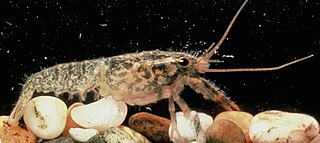 W
WParanephrops planifrons is a species of southern crawfish in the family Parastacidae. It is found in New Zealand. Paranephrops planifrons is one of two indigenous species of freshwater crayfish found in New Zealand. They are more commonly found in the North Island and the West Coast of the South Island while the P. zealandicus is found in the east and south of the South Island. Both species of Paranephrops are an important resources to the indigenous Maori, particularly in the Te Arawa and Lake Taupo regions.
 W
WProcambarus acutus, the white river crayfish, is a species of crayfish in the family Cambaridae. It is found in North America and Europe.
 W
WProcambarus econfinae, sometimes called the Panama City crayfish, is a species of crayfish in the family Cambaridae. It is only found around Panama City, Florida, and is listed as an endangered species on the IUCN Red List.
 W
WProcambarus fitzpatricki, sometimes called the spinytail crayfish, is a species of crayfish in the family Cambaridae. It is endemic to southern Mississippi, between the Wolf River and the Pascagoula River, and is listed as a species of Least Concern on the IUCN Red List. It is the only species in the subgenus Procambarus (Acucauda).
 W
WProcambarus lagniappe, the Lagniappe crayfish, is a species of crayfish in the family Cambaridae. It is endemic to Alabama and Mississippi, and is listed as Near Threatened on the IUCN Red List.